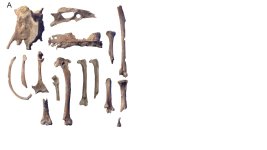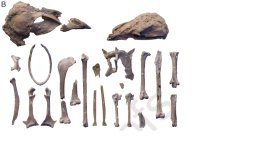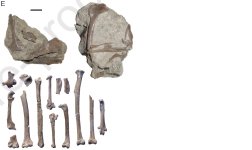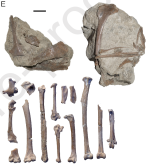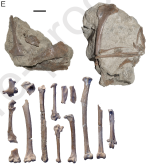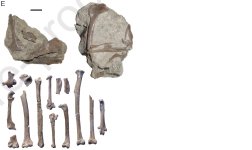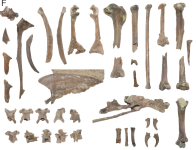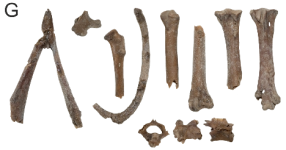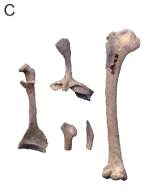albertonykus
Well-known member
Mayr, G. and A.C. Kitchener (2023)
The Halcyornithidae from the early Eocene London Clay of Walton-on-the-Naze (Essex, UK): A species complex of Paleogene arboreal birds
Geobios (advance online publication)
doi: 10.1016/j.geobios.2023.06.003
We report fossils of the Halcyornithidae from the early Eocene London Clay of Walton-on-the-Naze (Essex, UK). The material includes remains of nine individuals of these small zygodactyl birds, which belong to at least seven different species, two of which are newly described. This documents a high species richness of halcyornithids in the London Clay, and these birds apparently underwent a significant radiation in the early Paleogene. One of the specimens includes a skull with a proportionally much smaller neurocranium than in Pseudasturides macrocephalus from Messel, suggesting an increased encephalization of halcyornithids towards the middle Eocene. A previously undescribed variation in sternum morphology of halcyornithids distinguishes the fossils we assign to the taxa Pulchrapollia and Cyrilavis and indicates that halcyornithids occupied disparate ecological niches. Furthermore, sternum morphology supports a sister group relationship between the halcyornithid taxa Pulchrapollia and Pseudasturides. The closest extant relatives of the Halcyornithidae remain elusive, but our new osteological data substantiate the hypothesis of a sister group relationship to the Messelasturidae, another group of Eocene birds with zygodactyl feet.
The Halcyornithidae from the early Eocene London Clay of Walton-on-the-Naze (Essex, UK): A species complex of Paleogene arboreal birds
Geobios (advance online publication)
doi: 10.1016/j.geobios.2023.06.003
We report fossils of the Halcyornithidae from the early Eocene London Clay of Walton-on-the-Naze (Essex, UK). The material includes remains of nine individuals of these small zygodactyl birds, which belong to at least seven different species, two of which are newly described. This documents a high species richness of halcyornithids in the London Clay, and these birds apparently underwent a significant radiation in the early Paleogene. One of the specimens includes a skull with a proportionally much smaller neurocranium than in Pseudasturides macrocephalus from Messel, suggesting an increased encephalization of halcyornithids towards the middle Eocene. A previously undescribed variation in sternum morphology of halcyornithids distinguishes the fossils we assign to the taxa Pulchrapollia and Cyrilavis and indicates that halcyornithids occupied disparate ecological niches. Furthermore, sternum morphology supports a sister group relationship between the halcyornithid taxa Pulchrapollia and Pseudasturides. The closest extant relatives of the Halcyornithidae remain elusive, but our new osteological data substantiate the hypothesis of a sister group relationship to the Messelasturidae, another group of Eocene birds with zygodactyl feet.





